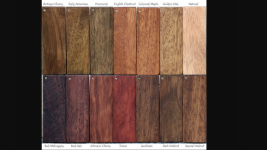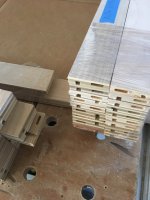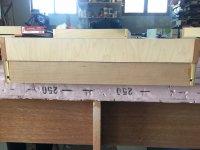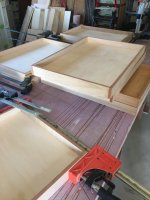Depends on thickness/flexibility of the metal bottom sheet, thickness of the vertical walls and the quality of the material. With good plywood (that dosn't mainly consist of air pockets inside) it wasn't a problem so far to use these in 4x50 for 12mm plywood (bigger should wall thickness permit it, if needed pre-drilled 1mm smaller than the screws shaft diameter to avoid splitting) and spaced every ~6-8cm (depending on feel, I usually tend toward overkill).dicktill said:Gregor said:Or use 1mm (or 2, in case you find 1mm is not stiff enough) aluminium sheets (which can nicely be cut with the TS to size) for the bottoms and screw them into the walls from below.
Make a rabbet the thickness of the bottom on the walls that leaves 1-2mm material toward the outside, to hide the bottom if you want it to not being visible.
Thanks Gregor. Am I correct that you are thinking of solid wood sides? Would think screwing into the edge of plywood wouldn't be good, but perhaps (hopefully!) I am wrong here. What size screws and what spacing?
For 9mm ply I would try the 3mm ones (in biggest length), build one sample piece and abuse it massively to find out if it'll hold together. Nevertheless, I would suggest you make the walls a bit thicker and place the rails into a groove (so the walls grow to the outside but you won't really waste useable space on the inside) to have more meat to connect the bottom into.
The linked screws will waste ~2-3mm below the bottom for the screw heads but have the benefit that they would hold against the sheet. To use countersunk ones (when needing that space) in this configuration I would increse the amount of screws to lessen the load on the individual one (so they don't pull through the sheet, aluminium is soft).
As I tend toward overdoing it (but I'm not in a mass-production environment, so the extra cost for screws and labor are no real issue for me) you might get away with less screws or could need more - YMMV. It's always a good idea to do science and screw some into a test piece to pull them straight out again, to get an idea how good they'll hold in your material. As is to build a prototype to test into oblivion before doing the real thing, when it is hard enough work to destroy it... it'll most likely last under normal use conditions.






